If you spend any time at all driving around the roads of North Mayo, the Tír Sáile signposts will eventually register on the subconscious!

Tír Sáile – The North Mayo Sculpture Trail – originated in 1993 when 14 site specific sculptures were installed in what can only be described as spectacular locations along the coast. (Tír = land /country Sáile = saltwater / seawater).
The project embraced the spirit of Meitheal – the tradition of local people coming together to achieve a common goal. In this case, it included visiting artists, community involvement, donation of sites, etc.
The primary aim was to celebrate the past, relish the present and embrace the future. Artists were to draw their inspiration from the physical landscape and cultural heritage of the region. Locations included seashore, agricultural land and even a disused quarry. The brief required the use of natural materials by the artists who would work in harmony with the surrounding landscape – sculptures were to add to, rather than detract from, their settings.
Not all works were designed for permanency and a few have since degraded back into the environment (11 are supposedly still in existence) while others have fallen into neglect. Meanwhile, other installations have been added to the collection over the years.
The ‘trail’ presents a bit of a challenge for the visitor. Road signs appear to be relatively new – but may direct you towards art pieces that no longer exist! The official website also needs attention and updating. The best advice I can give is to just plan and enjoy your driving excursions in the region and when you come across a signpost then by all means follow it up …. but only for a short time – heading off the beaten path is ok once or twice but can wear thin after a while! Several of the original pieces – when you do eventually find them – have no information whatsoever on site. This was presumably intentional at the time but you’ll find a limited piece of info per sculpture on the website.
This is what I found on my recent travels –
TEARMON NA GAOITHE
Tearmon na Gaoithe (Sanctuary of the Winds) enjoys a spectacular location overlooking the Atlantic. The ‘sanctuary’ is a cell made up of locally sourced sandstone slabs, thrown up by the waves. The cell recalls Ireland’s monastic tradition and evokes a sense of meditation and protection. (Alan Counihan, Dublin).

ECHO OF NAWASCAPE
This piece originally consisted of earthwork mounds – difficult to make out now – with a central paved space. The artist – Mariyo Yagi – frequently uses the image of rope as a symbol of continuity in her work. Here, the central theme of ‘nawa’ or DNA rope is still visible in the paving which recalls the DNA helix. The helix represents the continuity of life and the location of the work beside the ocean draws attention to water as the origin of life. (Mariyo Yagi, Japan)

TONNTA NA MBLIANTA
I couldn’t get close enough to this to work out whether it has just faded or has actually lost its stones and metal (the website picture isn’t much of a help!)
Tonnta na mBlianta (Waves of the Years) can be found on a retaining wall at Kilcummin Pier. The piece represents time and the ages of man. It was inlaid from the centre out, with gneiss (the oldest rock), basalt, copper, iron and stainless steel. (Simon Thomas, England)


The three pieces above can all be found close together – Tonnta na mBlianta at Kilcummin Harbour and Tearmon na Gaoithe and Echo of Nawascape a little further on at Lacken Bay.
THE CROSSING
This is one of the newer pieces – from 2014. Looking out over the Downpatrick Head and Dún Bríste sea-stack, it has been constructed around a blowhole. This architectural and landscape installation commemorates the natural power and richly-layered historical tales of the place. It consists of a mound of earth (like an ancient ring fort) with an enclosed structure and a tubular fence, all surrounding the blowhole.

BATTLING FORCES
This artist, inspired by the force of the sea and the wind on the headland, used two types of stone to symbolise the never ending battle. You have a structured wall of local Lacken sandstone struggling against a pile of local uncut limestone… no one knows which will win… (Fritze Rind, Denmark)

Battling Forces and The Crossing are found close together and easily located on Downpatrick Head – Battling Forces is on the side of the road, just before the car park while The Crossing is up on the headland.
THE CHILDREN OF LIR
The story of The Children of Lír is depicted through giant wind chimes. Their beautiful song is recreated artificially through the steel chimes, in tune with the natural sounds of the wind and the sea. The shed like structure, surrounding three benches , echoes Fionnuala cradling her three brothers in her wings.


The Children of Lir is one of the best known pieces on the trail and is accessed via the Carrowteige Loop Walk.
STRATIFIED SHEEP
Using Lacken Sandstone and local granite, the artist celebrates the long tradition of local sheep farming. Each piece is made up of several layers of stone, reflecting the natural stratification of the land. (Niall O Neill, Wicklow).
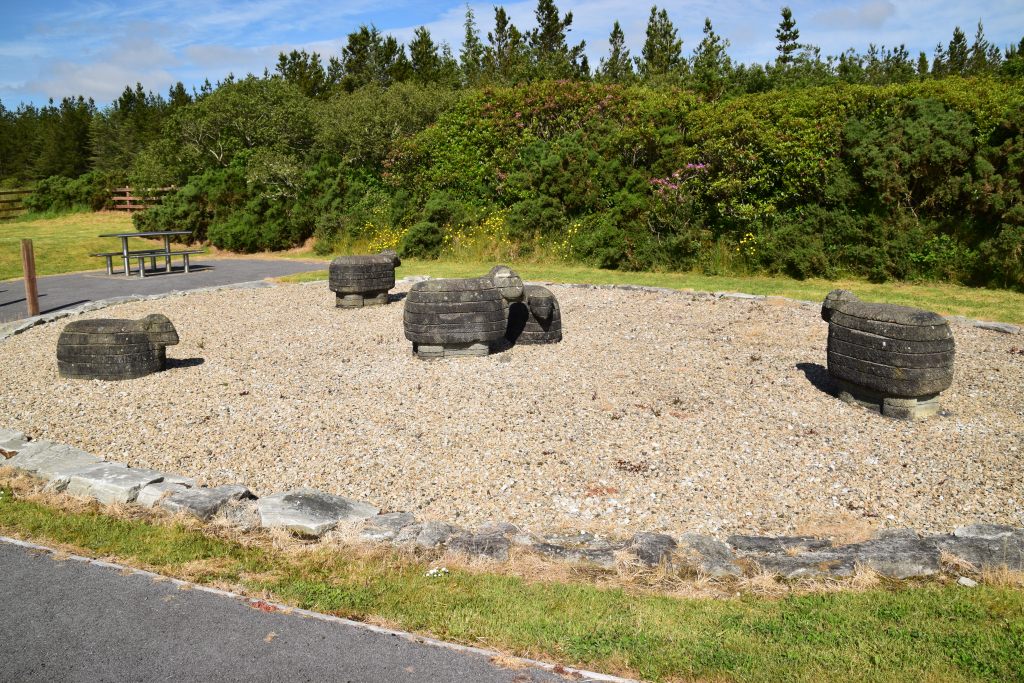
Stratified Sheep is located on farmland not far from Bellanaboy Bridge.
ACKNOWLEDGEMENT
This 50m long sculpture of earth and gneiss honours all the anonymous dead, who are remembered only through the tradition of the placing of unmarked stones. The piece is bisected by a narrow passageway which draws the visitor through the sculpture as though into the earth itself, emerging on the other side to greet the vastness of the surrounding sea. (Marian O’Donnell, Mayo).

Acknowledgement takes a bit of effort to reach – It’s located on Claggan Island. This is linked by a sandy causeway but it’s best to leave the car at the beach carpark and walk across one of the strands.
DEIRBHLE’S TWIST
This sculpture is located on Mullet peninsula in an area associated with St. Deirbhle. It was made by raising granite boulders that already existed on the site and placing them in an ascending spiral. The spiral reflects the work of megalithic sites but, according to the artist, also refers to atomic physics ‘The Stone is the landscape. It was always here. I have just, in a sense, rearranged it‘ (Michael Bulfin, Co. Offaly).
THE THIN PLACES
Here we have two projects from 2002. They work together as The Thin Places in which ‘time past is part of time future, & time future is time past, & time now is encompassing all.’
This was inspired by early monastic beehives – ‘a refuge on the one hand, but also a vista celebrating the peninsula’s eating of the sea.
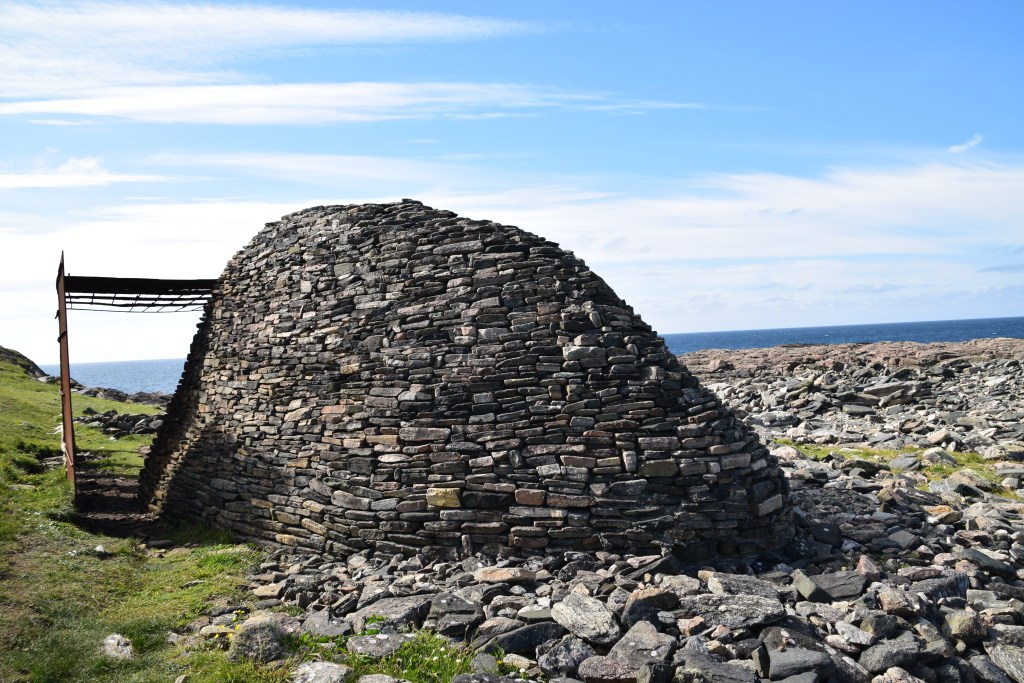
The second sculpture encompasses a natural blowhole and commemorates all those lost at sea. The notice at the entrance gate informs us that ‘the early Celts believed ‘thin places’ – geographical locations scattered throughout Ireland where a person experiences only a very thin divide between past, present, and future times. Places where a person is somehow able, possibly only for a moment to encounter a more ancient reality within present time; or places where perhaps only in a glance we are somehow transported into the future.’

Deirbhle’s Twist and the two pieces that make up The Thin Places can all be found on Mullet Peninsula.

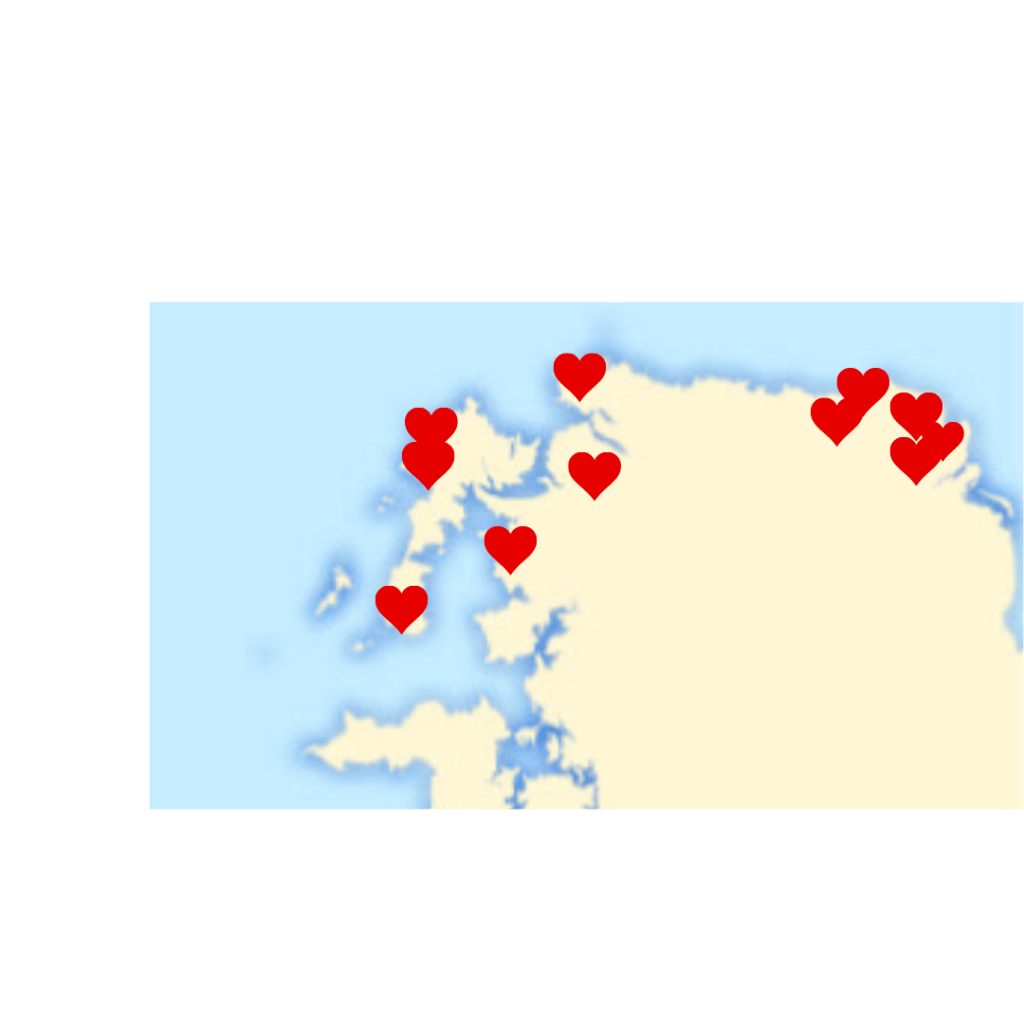




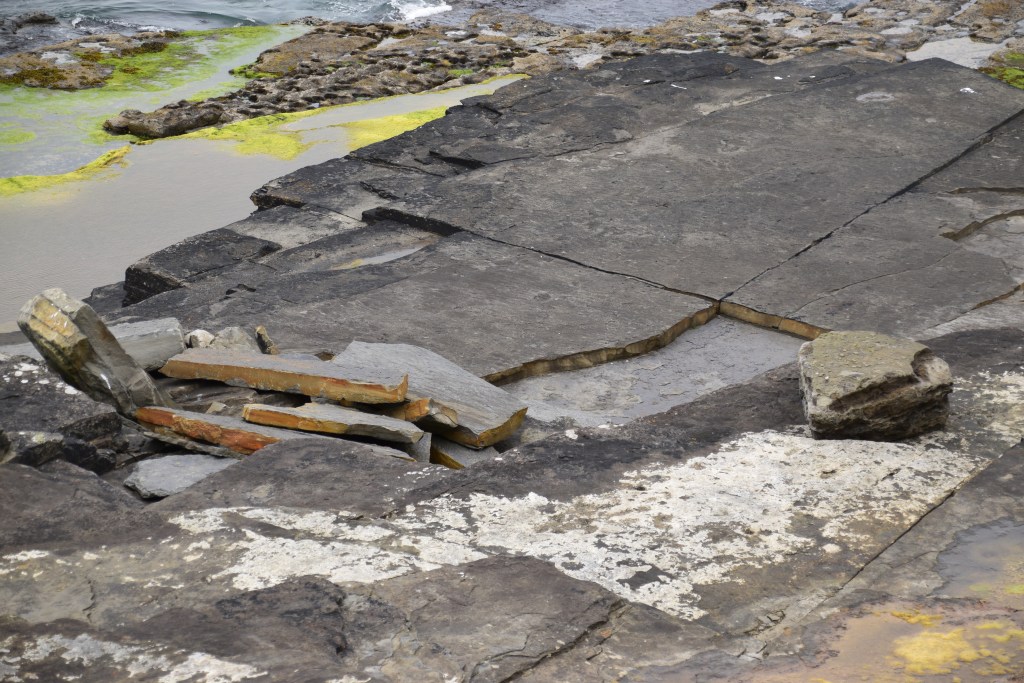
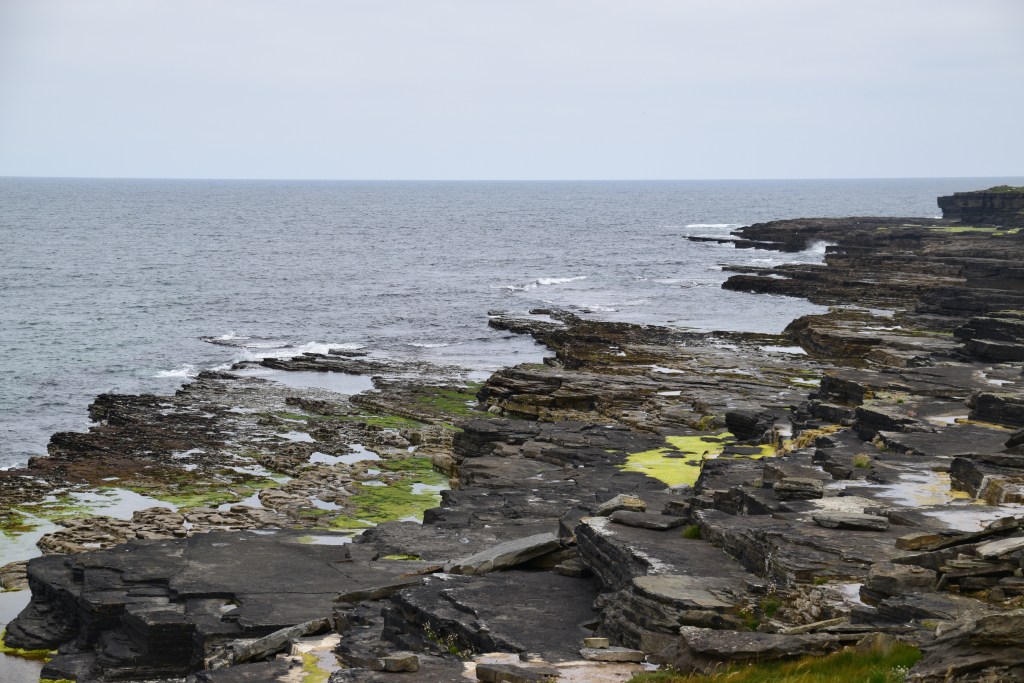


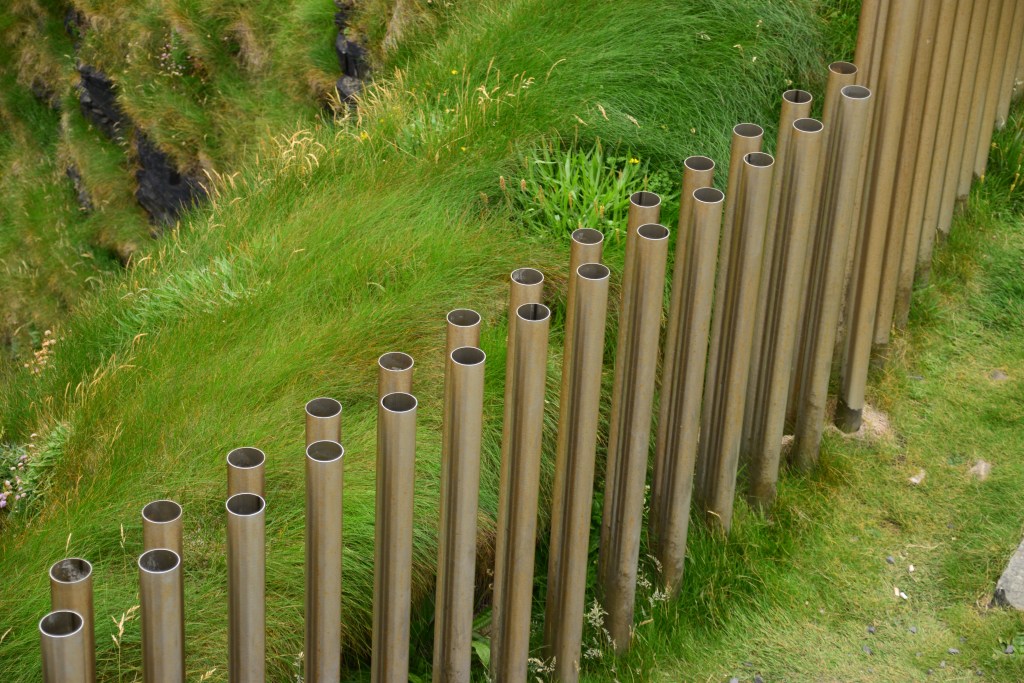




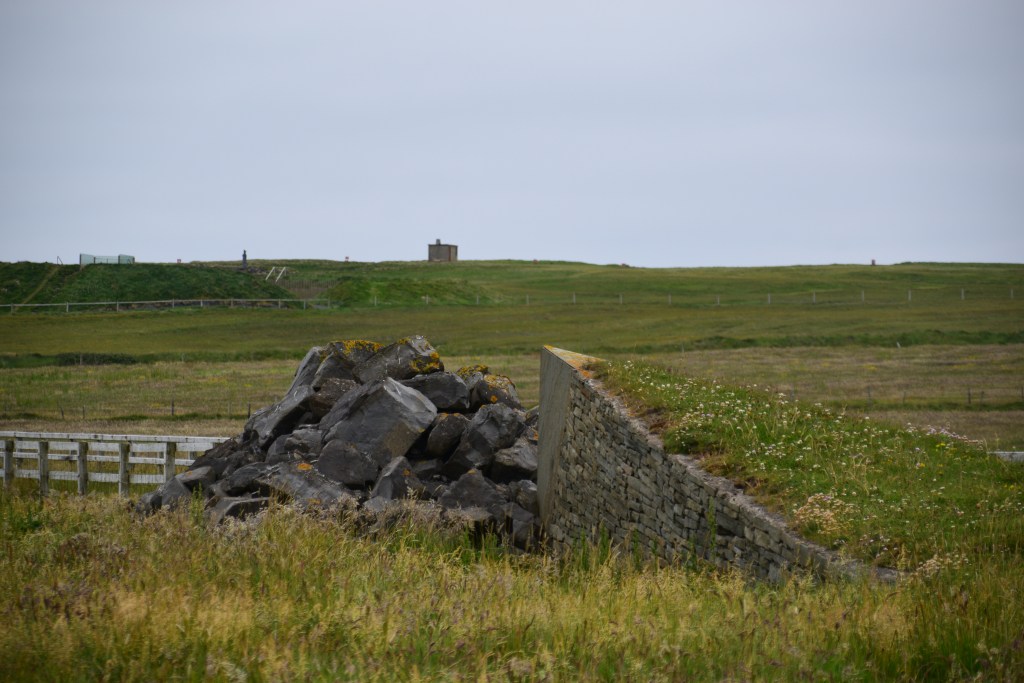












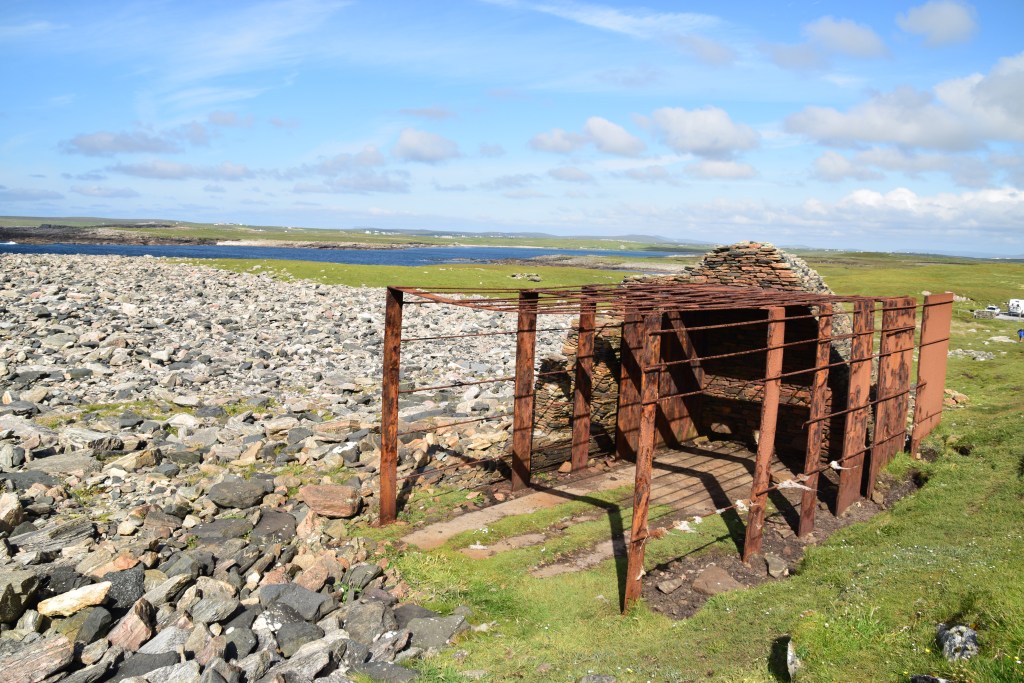
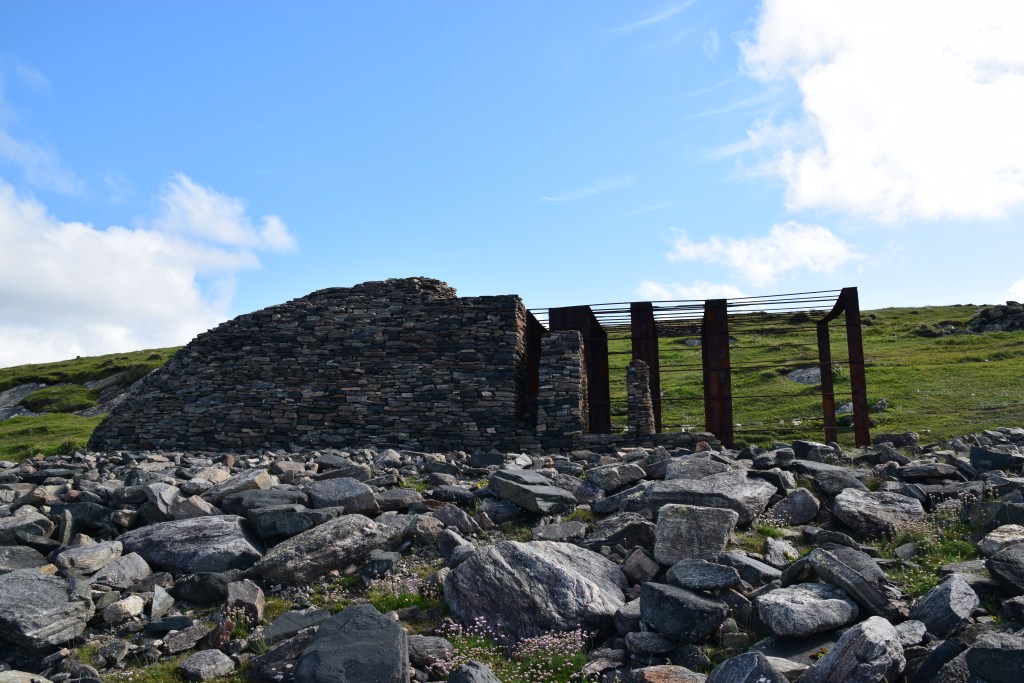


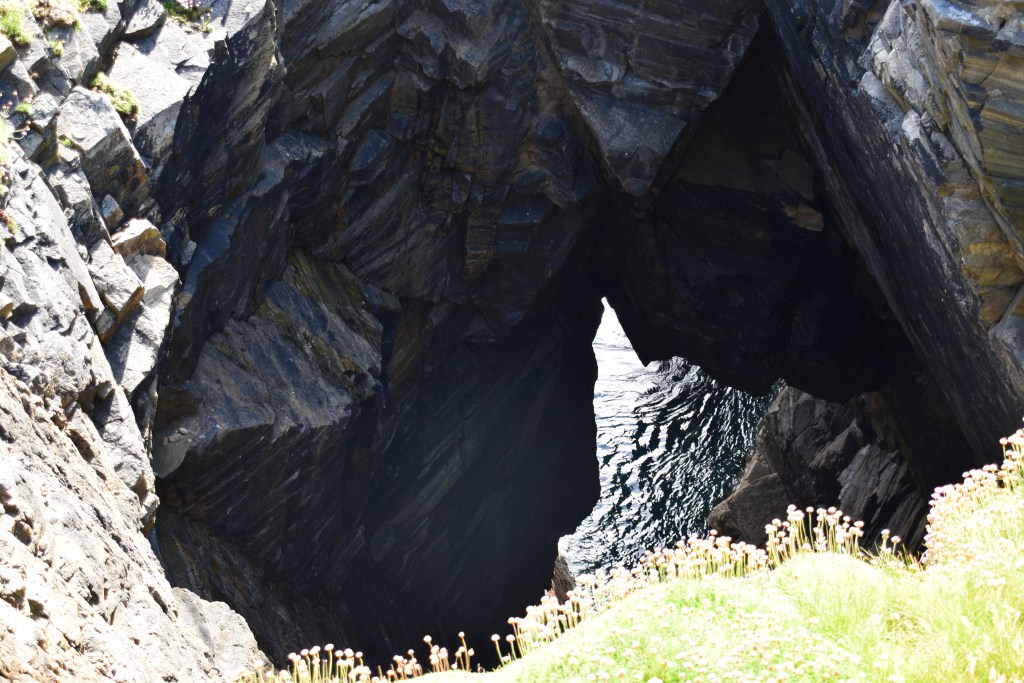
I have my doubts about the value of adding these works to a naturally beautiful landscape. It may even look like eyesore.
I agree with you in principle – the natural landscape certainly does not need embellishment… But in this case it works… most structures blend perfectly – you’d miss several of them if you weren’t actively looking for them. The only one I’d have reservations about is the piece with the sheep. However, they’re tucked away in a field and not drawing any attention to themselves at all!
How brilliant is that! Love these additions to the landscape and being so intrinsic to the Irish countryside I think they fit in perfectly. You must have had fun photographing these. Glad you had the weather for it!
We’d a bad start – the first few we went in search of have apparently ceased to exist so that was frustrating… Once I acknowledged to myself that I’d never get the full collection, I was fine – and then surprised myself once I was back home at how many we’d actually managed to hunt down!
I loved the ‘fence’ of fluted stainless steel around the blowhole including a sheltered space from the rough winds and weather at Downpatrick Head.
I’d say that’s the most visited piece because it’s easily accessed and the Head is a popular attraction. I love the pipe ‘fence’ also… That was actually our first time ever there… I’d say there were maybe a half dozen other visitors there in total so we almost had it to ourselves!
Beautiful photos as always Marie 🙂
Thank You Hannah!😘
I usually really like this sort of thing and many of these are no exception. I love the idea of the giant wind chimes for the Children of Lir and the stones of Deirbhle’s Twist really appealed to me, as did Battling Forces. But a few of them seem to mar the stunning coastal scenery rather than enhance it, like erecting all those metal tunes around the blowhole for the Crossing, and the bits of metal sticking out of the Thin Places one which look like an unfinished house on a construction site to me! Still, the concept of the sculpture trail is great and I enjoyed seeing it through your lens 🙂
The metal ‘fence’ at The Crossing is actually within an earthen mound so cant be seen until you’re right on it… The bit i don’t get either is the rusted metal at Thin Places…. There isn’t much written about any of the pieces so I wasn’t able to find out the thinking behind it. The stone structure itself blends perfectly into the landscape I think but I could live without that ‘extension’!
What a beautifully descriptive language and interesting structures along a beautiful landscape. I am always drawn to doors and windows, so I loved the Sanctuary photo.
I’m with you on doors and windows but I particularly loved the slabs just leaning against the structure – they must have been literally taken up from the shoreline below – brilliant use of rather uninteresting natural materials I think!
I rather like the fact that these works – and website – are fading a little, giving a realistic sense of impermanence and decay.
True…. which would have been some of the themes of the project.